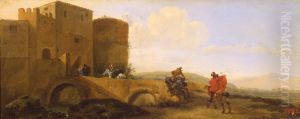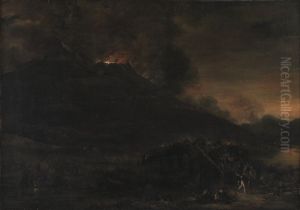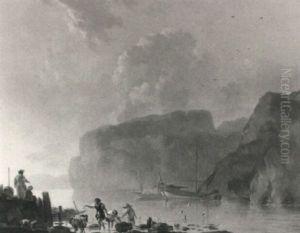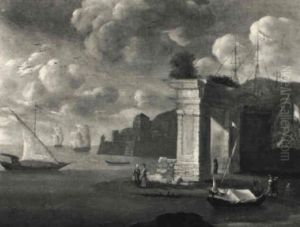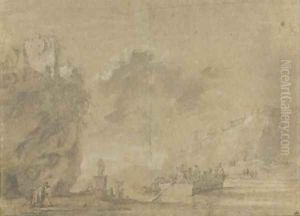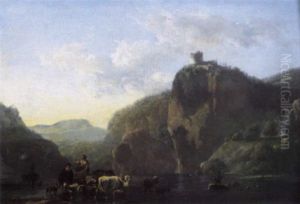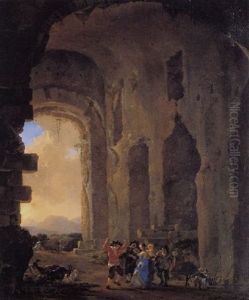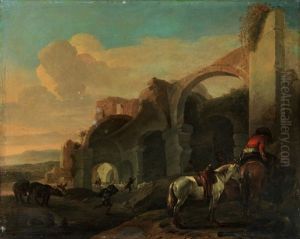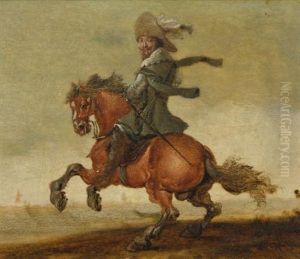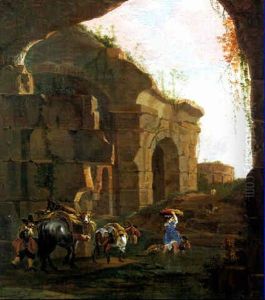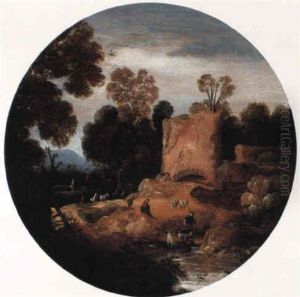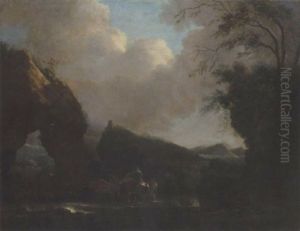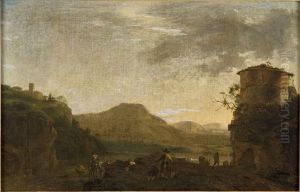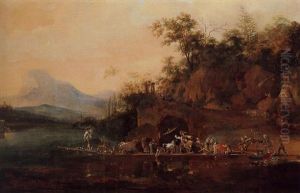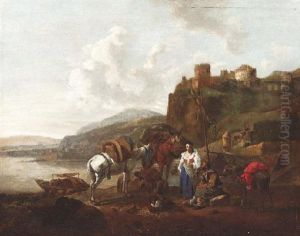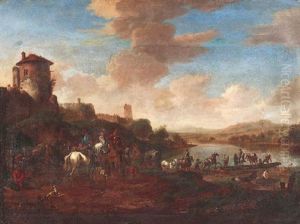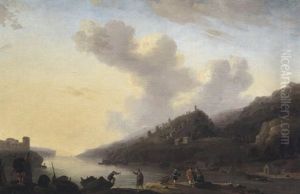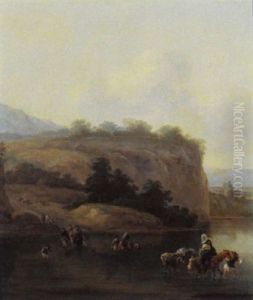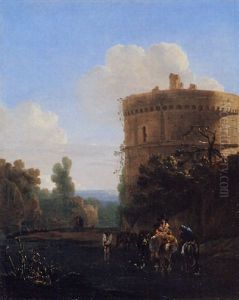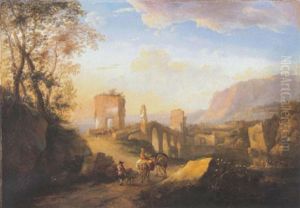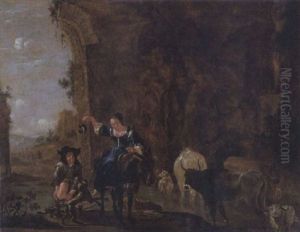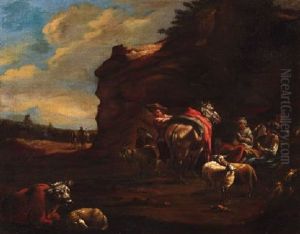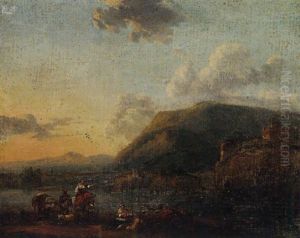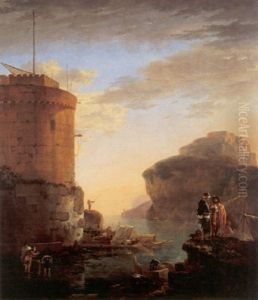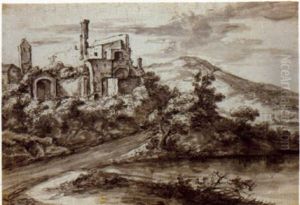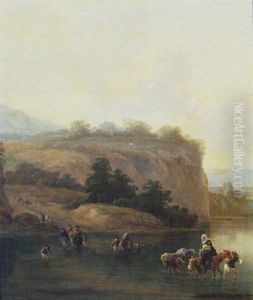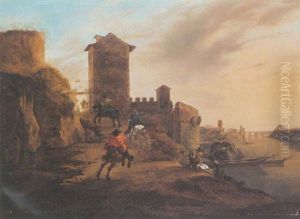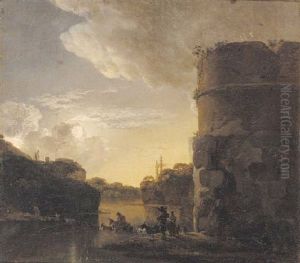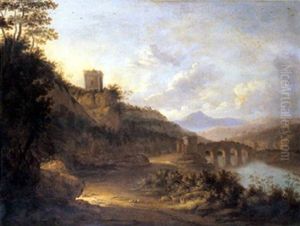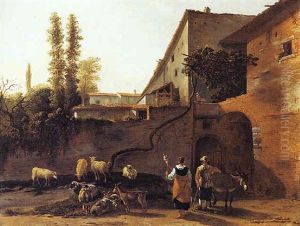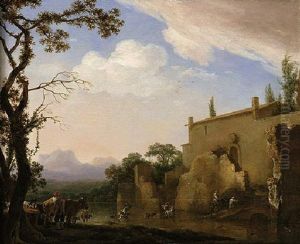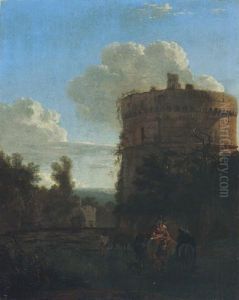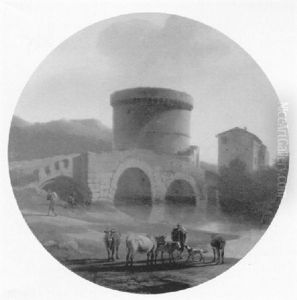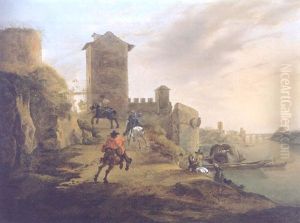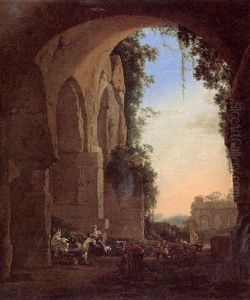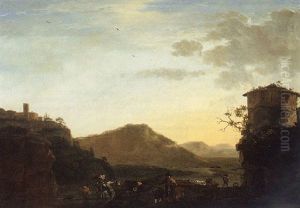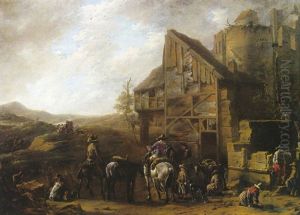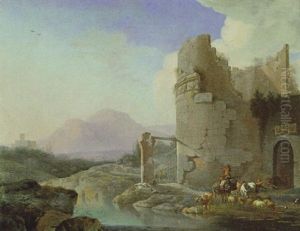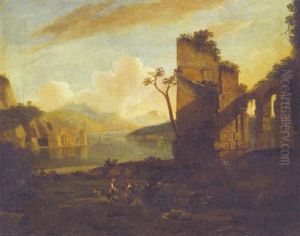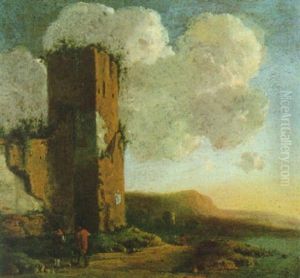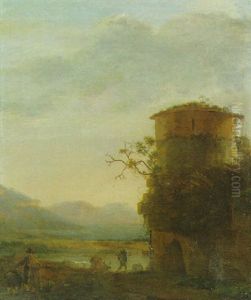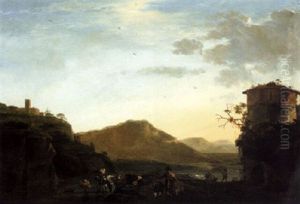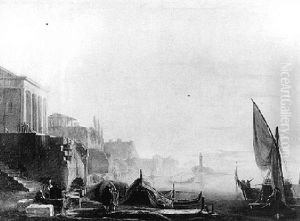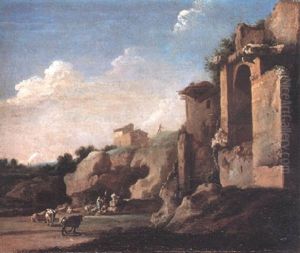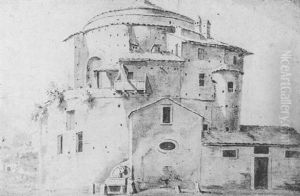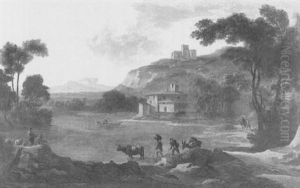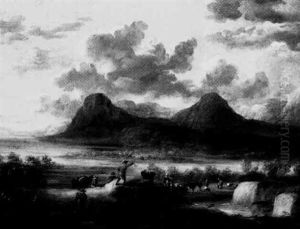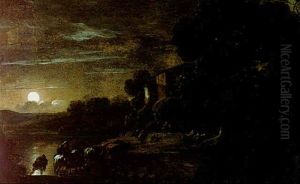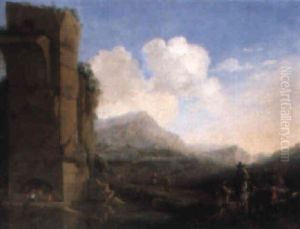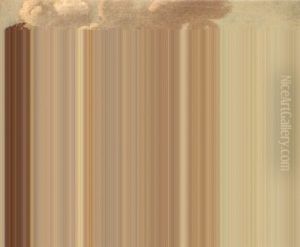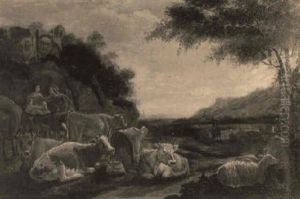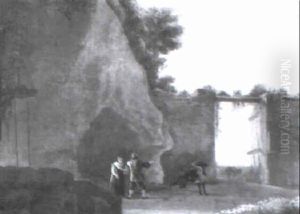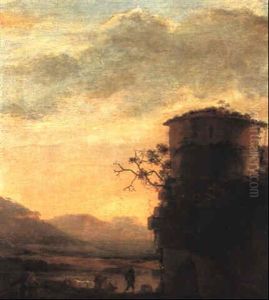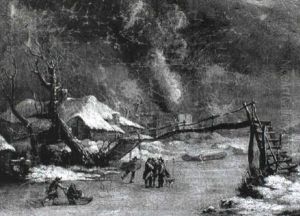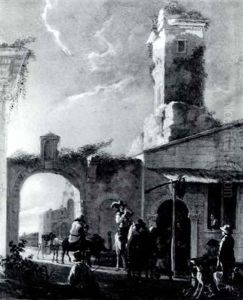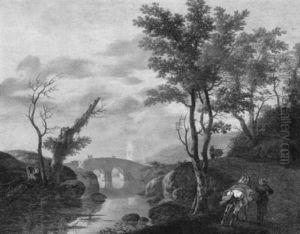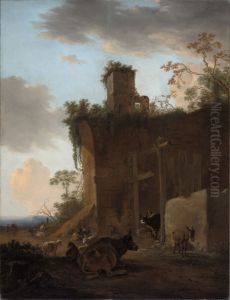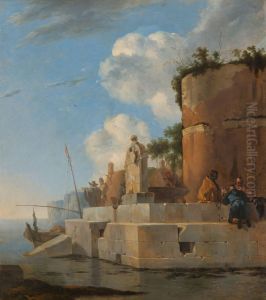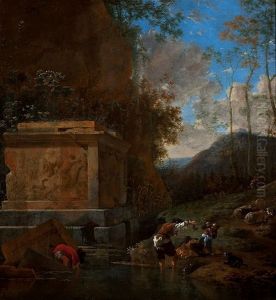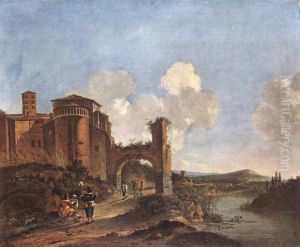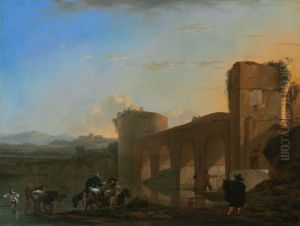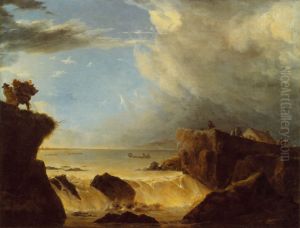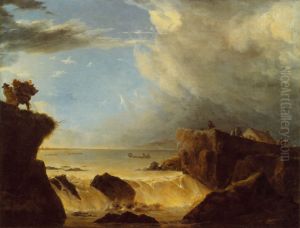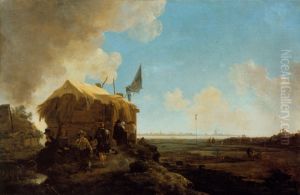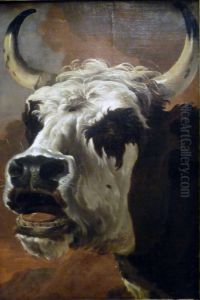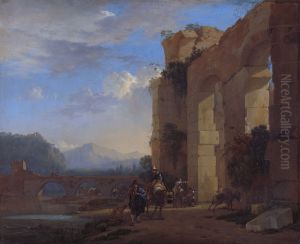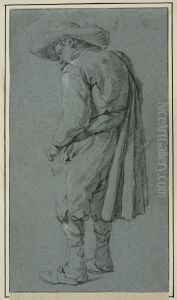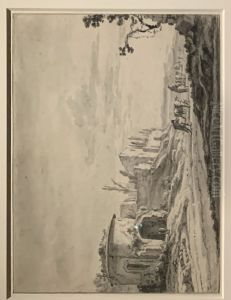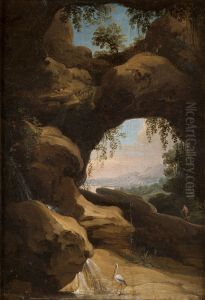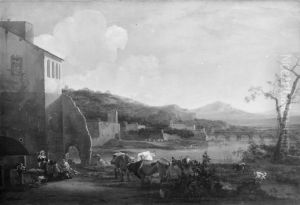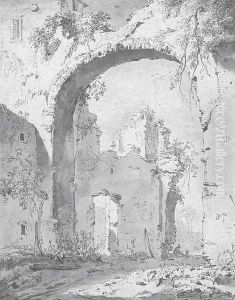Jan Asselijn Paintings
Jan Asselijn, also known as Jean Asselin, was a Dutch Golden Age painter, primarily recognized for his landscape and animal paintings. Born around 1610 in Dieppe, France, he spent most of his career in the Netherlands. Asselijn's early life and training are not well documented, but it is believed that he began his artistic journey in France before moving to Amsterdam.
In Amsterdam, Asselijn became associated with other Dutch artists of the time and was influenced by the work of landscape painters such as Pieter Lastman and possibly Claes Corneliszoon Moeyaert. He was particularly adept at capturing the Dutch countryside, often populating his landscapes with dramatic scenes and animals, especially horses and cattle.
Asselijn traveled to Italy early in his career, where he was exposed to the work of Italian masters and the Italianate landscape tradition. His experiences in Italy had a profound effect on his style, which often reflected the warm light and atmospheric perspective characteristic of Italian landscapes. He was in Rome for a period, becoming a member of the Bentvueghels, an association of mainly Dutch and Flemish artists active in Rome. It was here that Asselijn adopted the nickname 'Crabbetje' (little crab), due to a physical disability that affected his hands.
After returning to the Netherlands, Asselijn continued to work and develop his style, which by then had evolved into a distinctive blend of Dutch and Italianate influences. His works began to feature a more dramatic use of light and shadow, as well as a keen interest in the naturalistic depiction of animals, which he rendered with great skill and sensitivity.
Asselijn's most famous work is 'The Threatened Swan,' which is now in the collection of the Rijksmuseum in Amsterdam. This painting, which depicts a swan fiercely defending its nest against a dog, is often interpreted as a political allegory, representing the Dutch Republic defending itself against its enemies. Although the allegorical interpretation was likely applied after the fact, the painting remains an iconic example of Dutch Golden Age art.
Jan Asselijn's life was cut short when he died in Amsterdam in 1652. His works, however, have left a lasting impression on the landscape genre of the Dutch Golden Age, and he is remembered for his ability to infuse the Dutch landscape with the grandeur and drama of the Italian tradition, as well as his remarkable depiction of animals.
